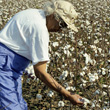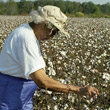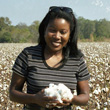I began this work because I wanted to pull readers deep inside perhaps the greatest untold story of the Twentieth Century. The goal was the convey the lives of the people who had dared to make the crossing from the South to all points North and West in what would come to be known as the Great Migration.
I wanted readers to imagine themselves in a hot, open field facing endless rows of cotton needing to be picked, having to bear the arcane laws of an arbitrary caste system and having to labor over the decision of their lives — whether to stay or whether to go.
To capture the magnitude of the phenomenon, I chose to trace the journeys of three different people who followed the three main streams of the Great Migration over the course of the decades it unfolded. To find them, I needed to reach as many as I could of of this dwindling generation before it was too late.
So, in the mid-1990’s, I set out on a search for people who had migrated from the South to the North and West during the span of the Great Migration. That search led me senior centers, AARP meetings, quilting clubs, high school reunions, union meetings of retired postal workers and bus drivers, Catholic masses in Los Angeles, Baptist churches where most everyone was from South Carolina and the various southern state clubs in the New World — particularly, Louisiana and Texas Clubs in Los Angeles and Mississippi and Arkansas Clubs in Chicago.
In these and dozens of other places frequented by seniors, I collected names and stories, interviewing more than 1,200 people who shared with me preliminary versions of their experiences. I conducted follow-up interviews with three dozen people and settled on three complementary subjects through whose lives I hoped to recreate the broad sweep of the movement.
The book is essentially three projects in one. The first was a collection of oral histories from around the country. This was a major challenge: Many survivors of the Jim Crow caste system did not want to talk about what they had endured, had not told even their own children and grandchildren the experiences they ultimately shared with me.
The second phase was the distillation of those oral histories into a narrative of three protagonists — Ida Mae Brandon Gladney, George Swanson Starling and Robert Joseph Pershing Foster. The third was an analysis of newspaper accounts and scholarly and literary works of the era and more recent scholarship of the Migration to recount the motivations, circumstances and perceptions of the migration as it was in progress and to put the subjects’ actions into historical context.
The main protagonists and many of the secondary people were interviewed for dozens, if not hundreds of hours, most of it tape-recorded and transcribed. I returned to their counties of origin to interview the surviving people who knew them and to retrace their lives in the South.
I went back to Chickasaw County with Ida Mae Gladney in the late 1990’s during the same time of year she had originally left Mississippi. There, we revisited the places and people she had known. I saw cotton growing for the first time in my life, and we stopped, at her behest, to pick a few bolls of it.
I reenacted all or part of these migration routes, devoting most of my time to the migration of Robert Foster, which meant driving from Monroe, Louisiana, to Houston and Laredo, Texas, to Lordsburg, New Mexico, Phoenix, San Diego, Los Angeles and on to Oakland, as Dr. Foster described in bitter detail, with my parents as generational tour guides for most of the journey. My father took notes and my mother offered commentary as I tried to recreate the experience of one person driving the entire distance through the desert night.
What you see in the book is essentially what I envisioned from the start. I had no idea it would take fifteen years to complete when I set out on my own journey to research and write this narrative. But it was an honor to tell the stories of these remarkable people, of the courage and fortitude of the forebears of many Americans, North and South, and an untold part of our country’s history.



